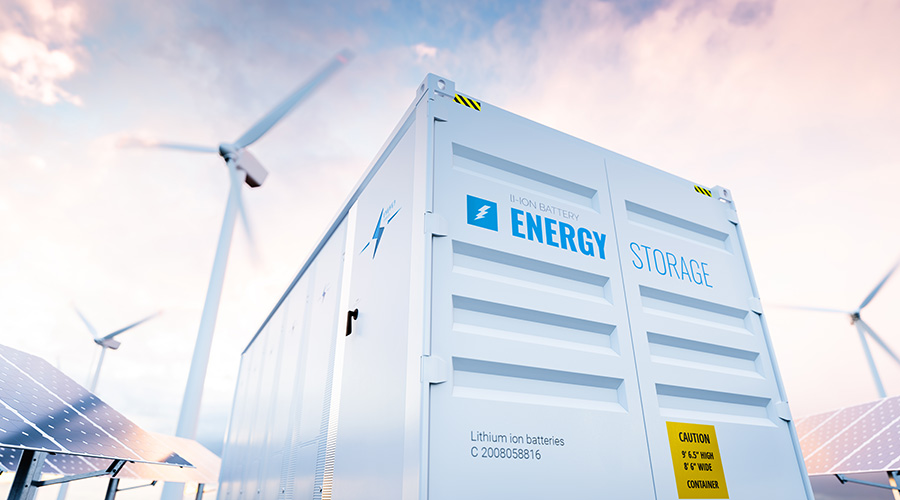5 Things You Need To Know About LEED v4
Part 1 of a 2-part article looking at some of the changes to expect in LEED v4 Existing Buildings Operations and Maintenance.
LEED v4 is almost ready for its long-awaited close-up. On Oct. 31, 2016, the U.S. Green Building Council will officially stop taking registrations for LEED 2009 — it’s longest-running and, by square footage certified, most successful rating system. But all good things must come to an end, and as LEED v4 steps into the forefront, USGBC hopes the new, more rigorous rating system will see equal success, especially regarding the Operations and Maintenance version of the rating system, which, for the last several years, has been used to certified more square footage than its New Construction counterpart.
“We’ve spent 12 years running the LEED for Existing Buildings and focusing on operations,” says Brendan Owens, chief of engineering with USGBC. “We’ve certified several thousand projects, and each of those projects has allowed us to clarify our intentions. We’ve tried to make (LEED v4) reflective of the lessons we’ve learned.”
As a bit of background, LEED v4 was first released in November 2013, with a sunset date for LEED 2009 originally scheduled for June 2015. But due to feedback from the industry, in late 2014, USGBC announced its decision to delay the LEED 2009 sunset until this fall.
So if facility managers have considered a LEED Operations and Maintenance certification initiative, or have previously certified under 2009 (or an early earlier version of the rating system) and are interested in re-certifying, now is the time to become familiar with some of the changes in LEED v4. Here is what you need to know.
1. Rigor, Rigor — As with each update to the rating system, LEED v4 is demonstrably more rigorous than its predecessors. “There’s always going to be a tightening up, and it’s going to be more difficult,” says Kunjan Shah, senior green building consultant with Healthy Building Science. “LEED v4 is definitely more difficult, more stringent.”
One example in the Operations and Maintenance rating system is a prerequisite that any existing building must achieve a 75 Energy Star score to be certified — though, see No. 4, regarding USGBC’s Energy Jumpstart compromise to this prerequisite.
Additionally, several credits from LEED 2009 have been consolidated and smoothed out, which many experts say is the best improvement between LEED 2009 and LEED v4. “What I like most about LEED v4 is that (USGBC) took out a lot of unnecessary repetition,” says Carmen Evans, project manager and senior LEED specialist for Epsten Group Inc. “It’s streamlined, and that makes it easier to reflect what’s really happening in a building without getting bogged down.”
This consolidation is most evident in the Sustainable Sites category, where several 2009 credits have been combined into fewer and easier-to-understand credits in LEED v4, such as Heat Island Reduction and Site Management. “The low-hanging fruit has changed,” says Dan Ackerstein, principal with Ackerstein Sustainability and member of the LEED Technical Committee. Some of the credits that were easy to earn, like site management or landscape, have been changed. It’s important for users to readjust their expectations in those areas so they don’t set themselves up for failure, he says. “Just because it was easy to earn credits for, say, site management or landscape, those have changed and expectations should change so we as users don’t set ourselves up for failure,” he says.
This change to some of the credits, of course, means a learning curve for many users. “It’s really important to approach this rating system as a clean slate,” says Ackerstein. “You have to be careful about carrying over assumptions from one rating system to another. There are new and different decisions about how to interpret credits.” Ackerstein says USGBC worked hard to address some of the “unwritten rules” users had to contend with in the LEED 2009 rating system, thereby making things it easier for project teams to know exactly how to submit for each credit.
“They’ve reduced the paperwork a lot,” says adds Shah. “Some of the redundant logging and tracking that was part of LEED 2009 has gone away, and that’s really good.”
2. New Credit Structure Establishes Policy, Encourages Performance — One of the biggest changes in LEED v4 O+M is the revamping of many credits to create an Establishment part wherein users will create a policy that will continue over time, as well as a Performance part that requires a certain measured outcome to achieve the credit. For instance, with the Indoor Air Quality Management Plan credit, the Establishment portion requires users to “Develop and implement an indoor air quality (IAQ) management program based on the EPA Indoor Air Quality Building Education and Assessment Model (I-BEAM).” Then the Performance part requires a review on a regular basis, at least every five years, to ensure IAQ is still meeting particular requirements.
The point of this, says Owens, is to reduce redundancy and really make it easier for facility managers to establish sustainable principles that are repeatable and impactful for the long-term. Policies are established once, and when it’s time for recertification or if there is staffing turnover, users don’t need to start over from square one. “It allows teams to be more solutions-oriented,” he says. “We see this as one of the great success stories so far with LEED v4. It allows facility managers to reassert their value to the organization.”
Evans for one, who has worked on several LEED v4 O+M certifications already, is a big fan. “We actually love this,” she says.
Ackerstein chimes in applause as well: “It’s a fantastic innovation, and facility managers will find that it’s much more intuitive to them in how they think about the lifetime of a building,” he says. “Facility managers are often constrained by annual budgets and short-term milestones, but in reality, they are long-term thinkers. The Establishment and Performance structure is well aligned with a longer scale of time.”
The one challenge associated with this new type of credit structure is simply that it’s new, and requires users to think differently about how to achieve the credits.
“You’re asking someone to learn something new, and that can be hard,” says Evans.
Related Topics:













